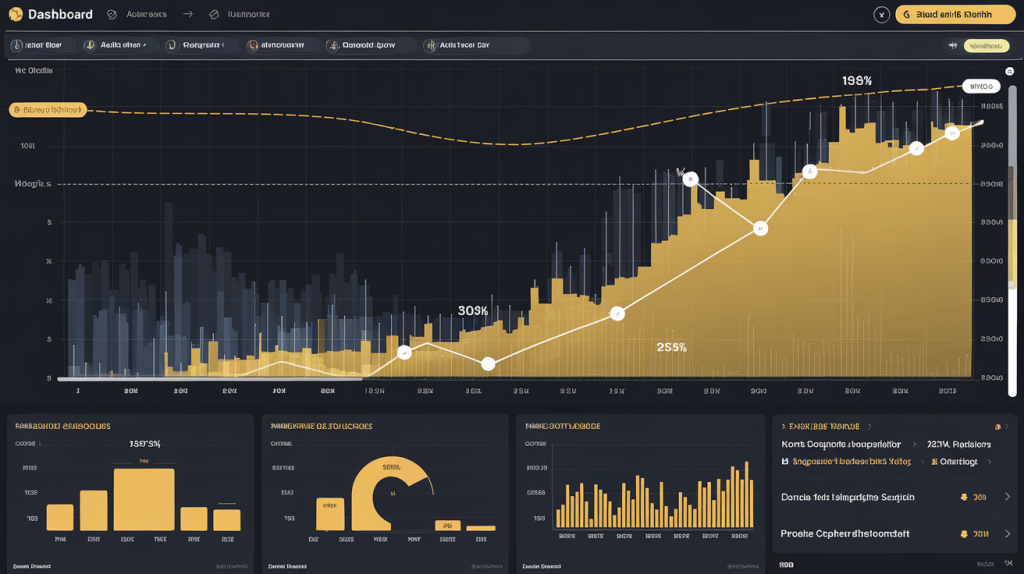Guest posting involves writing and publishing articles on someone else’s website or blog, often with a link back to your own site. This strategy can help you reach new audiences, build relationships with other bloggers or industry influencers, and, most importantly, drive traffic to your website. But how do you know if the effort you put into guest posting is actually paying off?
The first step in answering that question is understanding what you want to achieve with your guest posts. For most marketers, guest posts are primarily designed to increase traffic to their website. However, they can also serve other purposes, such as building backlinks for SEO, increasing brand awareness, or enhancing credibility in your industry.
In this article, we’ll focus on evaluating the traffic-related effectiveness of your guest posts, with a strong emphasis on how to use analytics tools to track success and make data-driven decisions.
Key Metrics to Track the Effectiveness of Your Guest Posts
1. Traffic Generation from Guest Posts
The most obvious metric to evaluate the success of a guest post is the traffic it generates. This is the direct outcome most marketers are after when they aim to increase traffic. The goal here is to track how many visitors come to your site as a result of clicking through from the guest post.
How to Track Traffic: To track this effectively, you need to use a website analytics tool, like Google Analytics. Once your guest post is published, you can set up a custom tracking link or simply monitor referral traffic. Here’s how to do it:
- Use UTM parameters: You can create a unique URL with UTM parameters to track the traffic from your guest post. UTM parameters are tags added to a URL that allow you to track specific campaigns and sources in Google Analytics. By adding these parameters to the links in your guest post, you’ll be able to identify which posts are driving the most traffic to your website.
- Monitor Referral Traffic: In Google Analytics, go to Acquisition > All Traffic > Referrals to see which external sites are sending traffic to your website. Here, you’ll be able to see how much traffic your guest posts are driving and identify the highest-performing guest post sites.
Why It Matters: The more traffic you drive to your website, the better. If you’re able to increase traffic significantly with your guest posts, it indicates that you’re reaching a relevant audience and they are intrigued enough by your content to visit your site.
What to Look for: You should be monitoring both immediate and long-term traffic results. It’s essential to see if the referral traffic grows over time as your guest posting efforts accumulate.

2. Backlinks and SEO Impact
In addition to driving traffic, guest posts are an excellent opportunity to build high-quality backlinks to your site. Backlinks from reputable sites not only help to increase traffic directly but are also crucial for improving your site’s search engine ranking.
How to Track Backlinks: You can use tools like Ahrefs, Moz, or SEMrush to track the backlinks that you’ve earned through guest posts. Here’s how to do it:
- Use Ahrefs or SEMrush: These tools offer backlink analysis features where you can enter your website URL to see the backlinks that point to your site. You can also filter the backlinks by source and evaluate how many of those came from your guest posts.
- Google Search Console: Another way to monitor backlinks is through Google Search Console. Under the “Links” section, you’ll be able to see the websites that link to your site.
Why It Matters: Quality backlinks improve your SEO by increasing your website’s authority. The more high-quality, relevant sites link to your content, the more likely you are to rank higher in search engine results pages (SERPs), which, in turn, can help you increase traffic.
What to Look for: Track the number of backlinks you’ve earned through your guest posts. If these links come from high-authority sites within your niche, you’re not only improving your SEO, but you’re also increasing the likelihood of long-term organic traffic growth.
3. Conversion Rate
Increasing traffic through guest posts is great, but ultimately, you want that traffic to convert. Whether your goal is to gain newsletter signups, sell a product, or encourage users to download a resource, tracking your conversion rate will help you understand how effectively your guest posts are turning visitors into customers or leads.
How to Track Conversions: You can set up specific goals in Google Analytics to track conversions. For example, you might want to track the number of users who sign up for your email list after reading your guest post or the number of sales that come from those visitors.
- Google Analytics Goals: Set up custom goals to track specific actions on your website that you want to measure, such as form submissions, downloads, or purchases.
- E-commerce Tracking: If you’re running an e-commerce site, you can use Google Analytics’ e-commerce tracking to monitor how many sales are coming from guest post referral traffic.
Why It Matters: High-quality traffic is great, but if those visitors aren’t taking the actions you want them to, your guest post efforts aren’t as effective as they could be. Tracking conversions allows you to see how well the content you’re sharing resonates with your target audience and whether it leads to meaningful actions on your site.
What to Look for: A high conversion rate means that your content is targeted well, and your guest posts are effective in convincing readers to take action. If your conversion rate is low, consider adjusting your call-to-action (CTA) or optimizing your landing page.
4. Audience Engagement (Comments, Shares, and Social Mentions)
Another key metric to consider is audience engagement. While traffic and conversions are essential, engagement helps measure how well your guest post resonates with readers.
How to Track Engagement: Engagement can be tracked on several fronts:
- Comments: Monitor the comments section of your guest post to see how many people are interacting with your content. Are readers asking questions, providing feedback, or sharing their thoughts?
- Social Shares: Track how often your guest post is shared on social media platforms. Tools like BuzzSumo and social media analytics can give you a sense of how much buzz your guest post is generating.
- Brand Mentions: Keep an eye on any mentions of your brand or content across the web, whether on social media, forums, or other blogs.
Why It Matters: High engagement means that readers find your content valuable and are interested enough to share or comment on it. The more your content resonates with an audience, the more likely it is that they’ll revisit your website or become long-term followers.
What to Look for: Look for trends in social shares and comments. If a post is generating a lot of comments and social activity, it’s likely hitting the mark with your target audience, helping to increase brand awareness.
5. Time Spent on Site and Bounce Rate
Once visitors land on your website, it’s crucial to track how engaged they are once they arrive. Metrics like time on site and bounce rate give you an insight into whether the visitors coming from your guest posts are sticking around to explore your content further or quickly leaving.
How to Track These Metrics: Google Analytics provides data on average session duration (time spent on site) and bounce rate (the percentage of visitors who leave after viewing only one page).
Why It Matters:
- Time on Site: If visitors are spending a significant amount of time on your site, it indicates that your content is engaging and that they are exploring further.
- Bounce Rate: A high bounce rate suggests that visitors didn’t find what they were expecting. This could be a sign that your landing page needs improvement.
What to Look for: Aim for a low bounce rate and a high average session duration. If these metrics are not performing well, consider improving the user experience on your landing page or tailoring your guest post content to better match user expectations.

Conclusion: Making Data-Driven Decisions
Evaluating the effectiveness of your guest posts is crucial for ensuring that your content marketing efforts are actually helping you achieve your goals, whether that’s to increase traffic, build backlinks, or improve conversions. By closely monitoring the right analytics metrics—traffic, backlinks, conversion rates, engagement, and user behavior—you can gain valuable insights that will help you refine your guest posting strategy and maximize your results.
Ultimately, success with guest posting isn’t just about getting your article published on high-authority websites; it’s about ensuring that the post drives meaningful traffic to your site, builds your brand’s authority, and contributes to your broader business objectives. By regularly analyzing the data and adjusting your strategy, you’ll be well-positioned to see tangible results from your guest posting efforts and continue increasing traffic over time.




